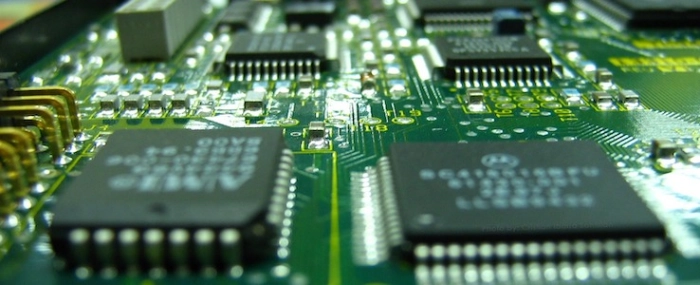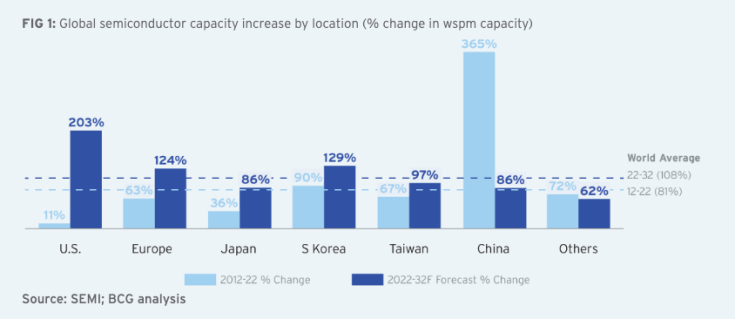
US's share of chip manufacturing to grow 203% by 2032
A new report by the Semiconductor Industry Association (SIA) says the US will increase its semiconductor manufacturing capacity by more than any region by the start of the next decade.
The study, titled “Emerging Resilience in the Semiconductor Supply Chain,” will be warmly received by the architects of the Chips and Science Act. They have been handing out grants and loans worth several billions of dollars to 'on-shore' chip making back to the US. The study suggests their plan is delivering. Highlight stats include:
- The US will increase its fab capacity by 203% from 2022 to 2032 (compared to 11% increase between 2012 and 2022
- The US share of the world’s chip manufacturing capacity will increase from 10% in 2022 to 14% by 2032
- In the absence of CHIPS enactment, the US share would have slipped to 8% by 2032
- The US will grow its share of advanced logic (below 10nm) manufacturing to 28% of global capacity by 2032, up from 0% in 2022.
“Effective policies, such as the CHIPS and Science Act, are spurring more investments in the US semiconductor industry. These investments will help America grow its share of global semiconductor production and innovation, furthering economic growth and technological competitiveness,” said Rich Templeton, Chairman of the Board at Texas Instruments and SIA board chair. “Continued and expanded government-industry collaboration will help ensure we build on this momentum and continue our next steps forward.”
However, it should be noted that while the US will improve its production capacity by the highest rate compared with previous performance, its overall improvement will be beaten by China. The report estimates China will boost capacity by 365% from 2022 to 2032.
The report, conducted in partnership with Boston Consulting Group, notes the global clamour by governments to accelerate domestic chip making capacity. It references Europe's USD 47 billion package, Japan's USD 17.5 billion in grants to industry leaders, and China's more than USD 150 billion in investments.

